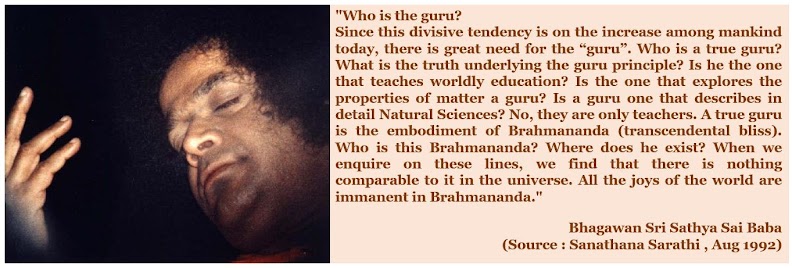Verse 2
(Like the future tree in a seed, this universe, before
(creation), remained un-manifest.
Then, due to the illusory play of Maya, Her creations in
Time and Space, project themselves in endless names and forms
Just as a juggler unrolls his magic, even so the “Great
Yogi” (Brahman) manifests this universe by His own free will
To that “Great Yogi”, who is the form of the Guru, do I
offer my salutations. He is the Revered Form of Sri Dakshinamurti.)
Let us take the
first line for today’s contemplation
Like the future tree in
a seed, this universe, before (creation), remained un-manifest
Before the creation,
this world was undifferentiated. But then just as sprout comes from inside the
seed, this world has come forth.
Ancient rishi’s vision
of creation is not the same as the modern scientists. Scientist calls it
singularity. We probably don’t have the right language or scientific concept to
describe it. However, the world comes from something. It did not come from
nothing. So, it is more of a transformation rather than the creation.
In the vision of
Vedanta, the un-manifest becomes manifest. That is meant by creation.
Before here means
logically before this world manifested. It does not refer to the time. Time
itself began with the manifestation of this world (big bang).
Before does not refer to
the time factor before the creation emerged but it refers to the state of
Brahman prior to the emergence of creation.
Tree in a seed
If you open a seed, you don’t
see the sprout. In fact, to your naked eyes, the seed seems undifferentiated.
But from that undifferentiated seed, sprout comes forth (manifests). The seed
is the cause for the sprout. This metaphor very appropriately explains the
creation.
The seed represents the
Un-manifest state of Creation, and the future tree represents the universe that
emerges from that un-manifest state. To help us to accept this, we have this
simile.
Knowledge and
Material
Any active creation
requires two basic qualities – Knowledge and Material.
The seed is the material
for the sprout. Interestingly, from the brown seed, light green sprout comes
out. Also the seed must be intelligent enough to cause the
creation.
This metaphor is used for this world. The world is compared to sprout. Just as the sprout comes forth from the seed, this universe sprouted forth from its creator.
But then we have cycles
of manifest – creation and un-manifest. Just as the sprout comes forth from the
seed, eventually that sprout will go away but will leave behind more seeds.
There is cycle once again.
Swami Dayananda Saraswati explains,
“In the Dakshinamurthy Stotram we have this
sentence- Like the sprout is there within the seed in an un-manifest form, so
too, this world is in an un-manifest form before creation”.
The un-manifest tree in the seed manifests under
conducive situations. What is already there alone comes to manifest. The tree
is there in the subtle form, in a programmed form in the seed. That is why only
the mango tree comes from the mango seed; no other tree comes. Just as the
whole tree is un-manifest in the seed, so also, this entire jagat is un-manifest
before creation.
Again it becomes manifest ‘as it was before’.
The phrase ‘as it was before’ points to the previous manifest state that was
there before the un-manifest condition. So, from this it is clear, it is
cyclic.
The world has not come into being from total
non-existence. If it is already existent, it need not come. So, from
non-existence the jagat cannot come, and from existence also, the jagat cannot
and need not come because it is already existent. The nonexistent pot can never
come into being, and an existent pot does not require coming into being.
Pot is potentially there in the clay and that is
brought into manifestation now. The intervening factor is called the
intelligent cause accompanied by secondary or aiding causes like the wheel, the
water, the sun and so on. This jagat was there before in an un-manifest form.
From the un-manifest, it is manifest now.”
In
the panchadasi session, we learnt
that the un-manifest creation was there in the 2nd stage, when the canvass was
starched and then the third stage, when the outline of the drawing in the mind
of the painter was drawn on the starched canvass.
These
2 stages were understood by us as the mysterious will of Eswara to create this universe and the broad outline of the
creation which emerges in the cosmic mind of the creator.
In
the un-manifest (canvass), thus, the future upcoming manifest creation
(drawings) has been willed.
Love.

























